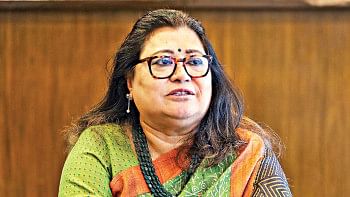Say hello to Annesha 3B
Brac University yesterday declared the name of a small artificial satellite, Annesha 3B, which it plans to launch into low earth orbit by May 2017.
Vice Chancellor of the university Prof Dr Syed Saad Andaleeb announced the name and signed an agreement with its Japanese partner in satellite venture, Kyushu Institute of Technology (KIT), at a special ceremony arranged on the university campus in the capital.
Director General of the Spectrum Division of Bangladesh Telecommunication Regulatory Commission (BTRC) Col Md Nasim Pervez, present on the occasion, congratulated Brac University on creating history by planning to launch the country's first satellite in the orbit.
"We'll be launching geostationary communications satellite, Bangabandhu 1, on December 16, 2017, which is 3.5 tonnes in weight. The Brac's one is a nanosat, weighing less than a kilogramme. Than again size of the satellite is not an issue. The issue here is translating dream into reality. Everything starts from zero," said the BTRC DG.
The low-cost small satellite, categorised as nanosat, has been purposefully developed to serve academic and research goals. KIT has been with Brac University's nanosat launching process since the signing of a memorandum of understanding a couple of years ago and is now helping it launching the nanosat through Japan Aerospace Exploration Agency (JAXA) and the International Space Station (ISS).
Three Brac University students, Raihana Shams Islam Antara, Abdulla Hil Kafi and Maisun Ibn Monowar – who helped design Annesha 3B at KIT's lab and their mentor Prof Mengu Cho, director of the Laboratory of Spacecraft Environment Interaction Engineering (LaSEINE), joined the programme from Japan and University of Texas Assistant Prof Dr Arifur Rahman Khan joined from USA, through Skype.
Compared to conventional hi-cost communications satellites, nanosats are smaller in size, weighing between one and 10kg, and can be placed in low earth orbit, 500 to 1,500km above the equator, instead of the more expensive to launch and geostationary earth orbit satellites, placed around 36,000km away from earth.
Head of Brac University's mathematics and natural sciences (MNS) department Prof Dr Abu Abdullah Ziauddin Ahmad, its computer science and engineering (CSE) department's Associate Prof Dr Md Khalilur Rahman and a Japanese embassy counselor in Dhaka Mitsutake Numahata, also spoke at the programme.
The departments of CSE, MNS, and Electrical and Electronic Engineering (EEE) of Brac University are involved in the nanosat programme.
Speakers said the nanosat venture came in good synchronisation with Bangladesh's first communication satellite as it would help expose the country's young scientists and academics to satellite technology.
Vice-Chancellor Dr Syed Saad Andaleeb said Brac University has decided to open a satellite laboratory and, "one day we'll build satellites at our own laboratory."
He explained the nomenclature of Annesha 3B saying that the 3B stood for Bangladesh, Brac and BIRDS. BIRDS is the name of the KIT's project under which the satellite programme is being carried out.
BTRC DG Nasim Pervez credited Brac University for having the vision and building the future of Bangladesh's satellite technology. Col Nasim said there is a huge prospect for young Bangladeshis to work and gain in the field of satellites.
Showing a design module of the Annesha 3B, Prof Ziauddin, also a former chairman of the Bangladesh Space Research and Remote Sensing Organization (SPARRSO), said, "It's a small box but a giant stride for us."
Prof Khalil informed the audience that the final design module would be completed by the end of the month, lab testing to be completed in November and handed over to JAXA in the year-end. Then in March, JAXA rocket would take the nanosat to ISS, who would deploy the satellite in the low earth orbit through its robotic arms.
Once placed in orbit, the satellite would generate high quality photographs of Bangladesh, meteorological data, vegetation, flood, urbanisation, sea area etc and the students and faculties would be able to analyse those for academic and research purposes.

 For all latest news, follow The Daily Star's Google News channel.
For all latest news, follow The Daily Star's Google News channel. 



Comments